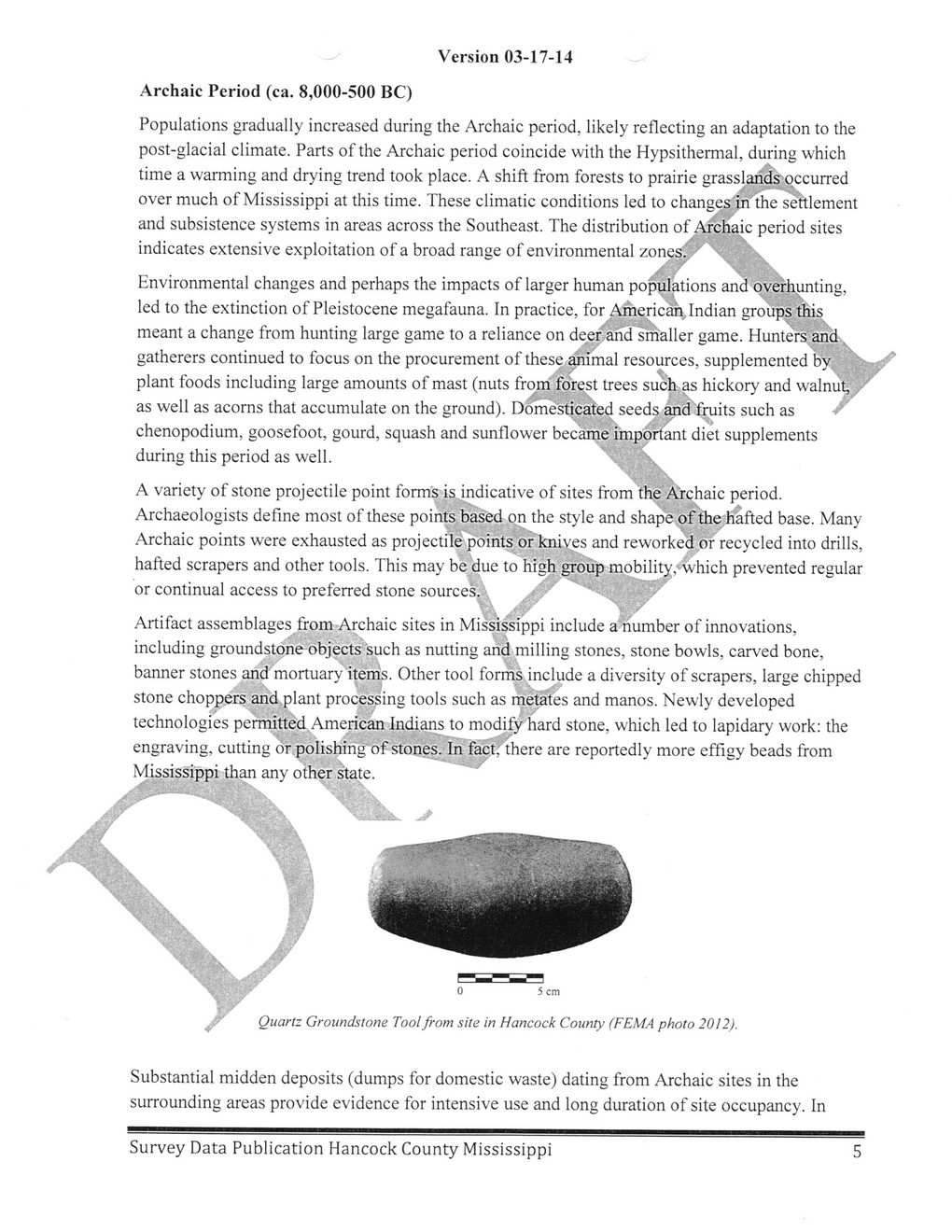This text was obtained via automated optical character recognition.
It has not been edited and may therefore contain several errors.
Version 03-17-14 Archaic Period (ca. 8,000-500 BC) Populations gradually increased during the Archaic period, likely reflecting an adaptation to the post-glacial climate. Parts of the Archaic period coincide with the Hypsithermal, during which time a warming and drying trend took place. A shift from forests to prairie grasslands'occurred over much of Mississippi at this time. These climatic conditions led to changes in'the settlement and subsistence systems in areas across the Southeast. The distribution of Archaic period sites indicates extensive exploitation of a broad range of environmental zones’./ '' ’ • ' v x Environmental changes and perhaps the impacts of larger human populations and overhunting, led to the extinction of Pleistocene megafauna. In practice, for American Indian groups this meant a change from hunting large game to a reliance on deer and smaller game. Hunters anti N gatherers continued to focus on the procurement of these animal resources, supplemented by ■■■> plant foods including large amounts of mast (nuts fromTorest trees such as hickory and walnut, /" as well as acorns that accumulate on the ground). Domesticated seeds and fruits such as chenopodium, goosefoot, gourd, squash and sunflower became important diet supplements during this period as well. \ A variety of stone projectile point form's is indicative of sites from the Archaic period. Archaeologists define most of these points based on the style and shape of the hafted base. Many Archaic points were exhausted as projectile points or knives and reworked pr recycled into drills, hafted scrapers and other tools. This may be due to high group mobility,^which prevented regular or continual access to preferred stone sources. Artifact assemblages from Archaic sites in Mississippi include a number of innovations, including groundstone objects such as nutting and milling stones, stone bowls, carved bone, banner stones and mortuary items. Other tool forms include a diversity of scrapers, large chipped stone choppers and plant processing tools such as metates and manos. Newly developed technologies permitted American Indians to modify hard stone, which led to lapidary work: the engraving, cutting or polishing of stones. In fact; there are reportedly more effigy beads from • '• • s' Mississippi than any other state. . Quartz Groundstone Tool from site in Hancock County (FEMA photo 2012). Substantial midden deposits (dumps for domestic waste) dating from Archaic sites in the surrounding areas provide evidence for intensive use and long duration of site occupancy. In Survey Data Publication Hancock County Mississippi 5

Hancock County History and Archeology Survey-Publication-Data-2014-(07)